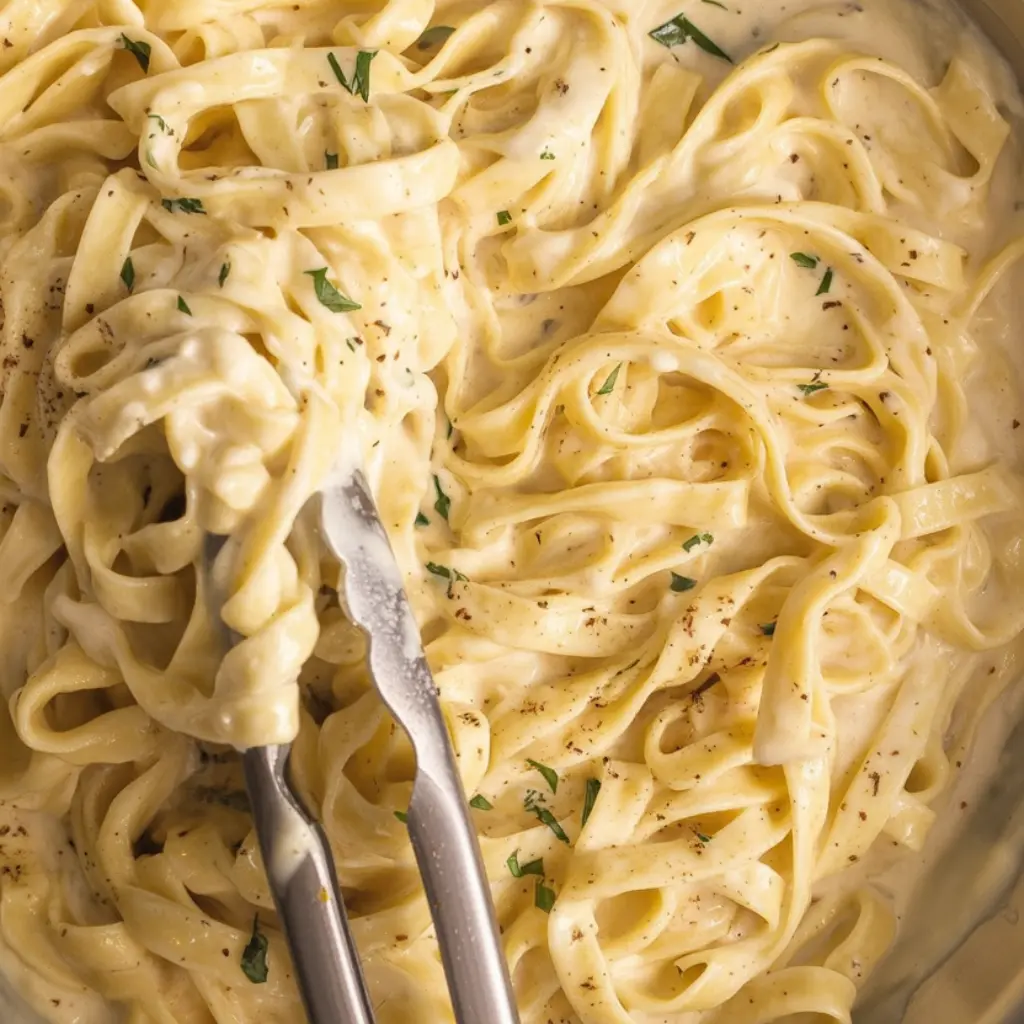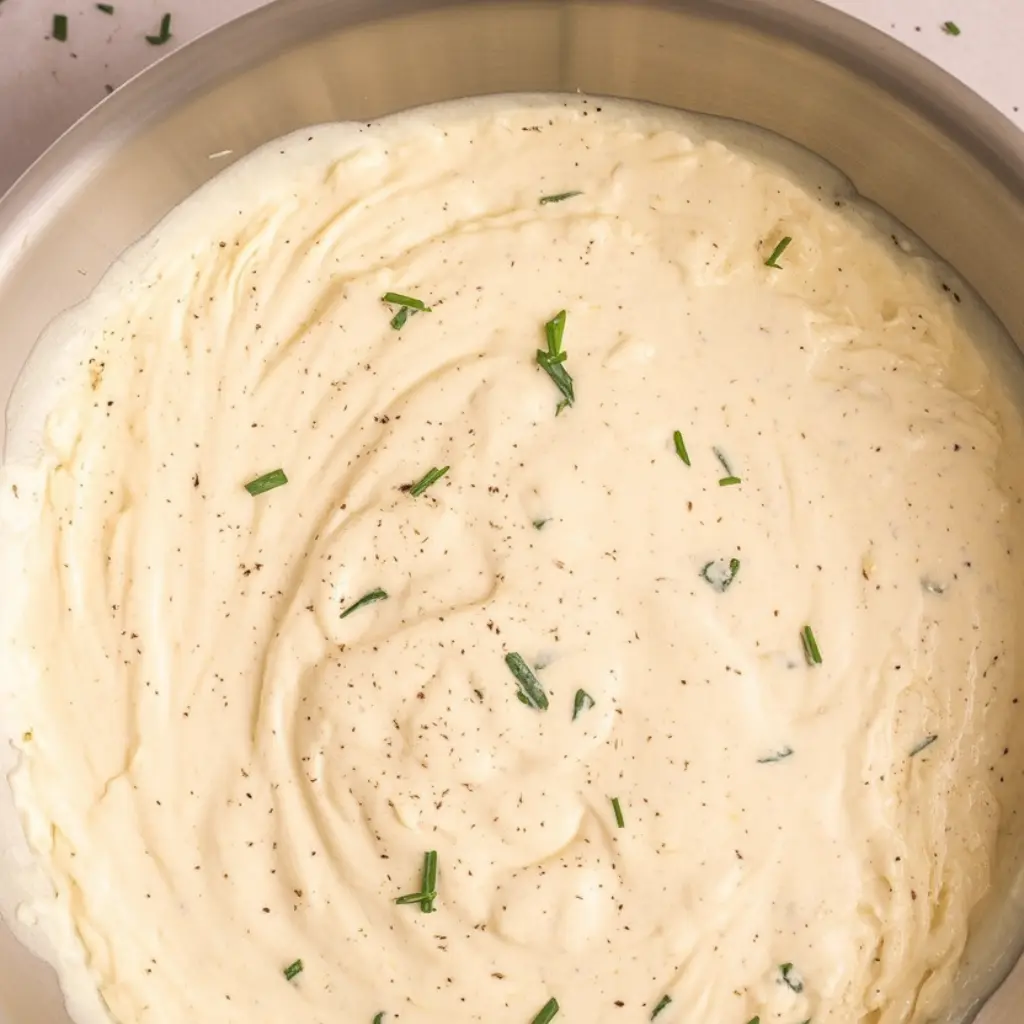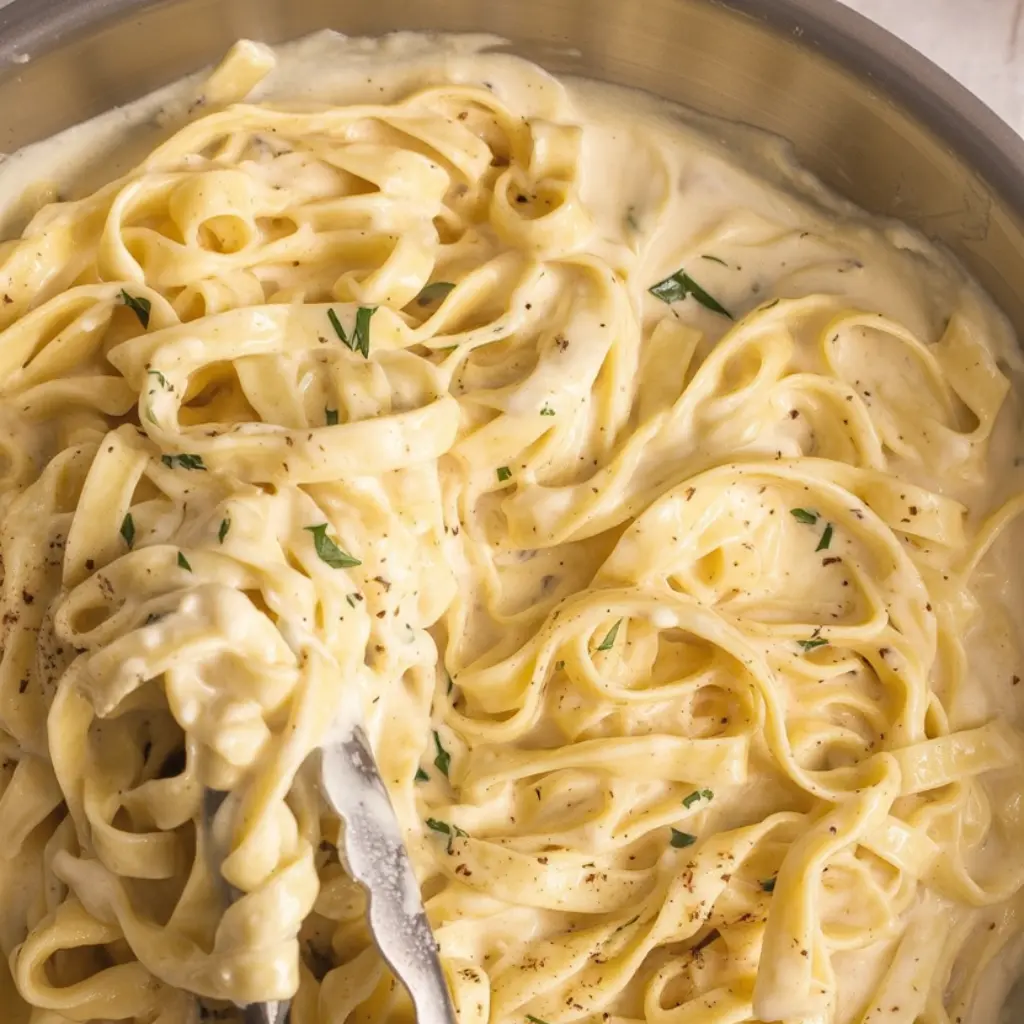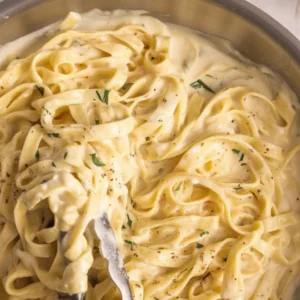I still remember the first time I tried to make Alfredo sauce at home. I was about twenty-two, newly married, and determined to impress my husband with what I thought would be a “fancy” Italian dinner. I had no idea what I was doing—I poured cream straight into a pan, added a mountain of cheese all at once, and ended up with a lumpy, broken mess. We laughed, ate what we could salvage, and ordered pizza afterward.
But something about that attempt stuck with me. I wanted to get it right, not for perfection’s sake, but because I knew Alfredo had the kind of comforting richness that could make even an ordinary night feel special. Over the years, I’ve made it more times than I can count—sometimes to feed a crowd, sometimes just for myself when I need a bowl of comfort. I’ve learned the little tricks that transform it from heavy and clumsy to smooth and indulgent, and now, when I stir the sauce until it coats the spoon just right, I think back to that first kitchen mishap and smile.

Why You’ll Love This Recipe
- Simple ingredients you probably already have in your fridge
- Ready in under 20 minutes—perfect for busy weeknights
- Creamy, rich, and full of comforting flavor
- Easy to customize with protein, vegetables, or herbs
- Tastes even better than most restaurant versions
Ingredients You’ll Need
- Butter (½ cup, or one stick): I always use unsalted butter so I can control the seasoning, but if salted is what you have, just taste before adding extra salt.
- Heavy cream (2 cups): This is the backbone of Alfredo. Half-and-half can work in a pinch, though the sauce won’t be as rich.
- Garlic (2 cloves, minced): Some traditionalists say garlic doesn’t belong, but I can’t resist the way it deepens the flavor.
- Parmesan cheese (1 ½ cups, freshly grated): Please grate it yourself if you can. Pre-shredded cheeses often contain additives that prevent smooth melting.
- Salt and black pepper (to taste): Start light; the Parmesan adds saltiness, too.
- Nutmeg (a pinch, optional): My grandmother always slipped a whisper of nutmeg into creamy sauces, and I find it makes a quiet but noticeable difference.
How to Make It (Step-by-Step Instructions)
Start by melting your butter in a wide saucepan over medium heat. I’ve learned not to rush this step—if the butter browns too quickly, it will shift the whole flavor profile of the sauce. Once melted, add your minced garlic and let it cook just until fragrant. You don’t want it browning, only softening enough to release that cozy aroma.
Pour in the heavy cream slowly, stirring as you go. The first few times I made this, I dumped it in all at once, and it shocked the butter into separating. Pouring steadily but gently allows the fat to stay emulsified, which is the secret to that silky texture we’re after. Let it come to a gentle simmer—not a rolling boil—and give it a few minutes to thicken.
When the cream has taken on a slightly glossy look, lower the heat and start sprinkling in your Parmesan by small handfuls, stirring after each addition. This was the mistake that haunted me for years—I used to dump the whole pile in and watch it clump at the bottom of the pan. Patience is everything here. Add, stir, melt, repeat. Soon you’ll see the sauce transform into a creamy, cheese-laced ribbon.
Taste and adjust with salt, pepper, and just a hint of nutmeg if you like. Don’t be afraid to season well—bland Alfredo is a common mishap, but you’ll know when the flavors sing. Once the sauce coats the back of your spoon and clings without sliding off, it’s ready. Toss it right away with hot pasta, because Alfredo waits for no one.

Expert Tips for the Best Results
Over the years, I’ve discovered that the key to Alfredo is gentle heat and patience. If you let the cream boil hard or add the cheese too quickly, you’ll end up with a grainy sauce, no matter how good your ingredients are. Keep your heat at a steady medium-low and stir often. Freshly grated Parmesan makes a world of difference in both flavor and texture, so it’s worth taking those extra minutes with the grater. And most importantly, serve the sauce right away—it’s at its peak the moment it comes together, and pasta will happily soak it up while everything is still warm and velvety.
Variations & Substitutions
There have been plenty of nights when I’ve had to improvise, and Alfredo sauce is surprisingly forgiving. If I’m short on heavy cream, I’ll blend half cream with half whole milk, adding just a bit more butter to keep it rich. I’ve also swapped Parmesan for Pecorino Romano when that’s all I had, which gave the sauce a sharper, saltier bite that we loved just as much. One memorable evening, I tossed in a handful of spinach that was about to wilt in the fridge, and it not only stretched the sauce but also added color and freshness. Alfredo has a way of adapting to what you have on hand, and sometimes those happy accidents become new favorites.
Serving Suggestions
Alfredo sauce shines on pasta, of course—fettuccine is the classic, but I’ve draped it over penne, linguine, and even homemade gnocchi with wonderful results. When I’m making a full meal, I like to serve it alongside a simple green salad with a tangy vinaigrette, which balances out the richness. Garlic bread is a natural companion, and on colder nights, I’ll roast some broccoli or asparagus to add a bit of crisp contrast. Alfredo is indulgent, yes, but it’s also surprisingly versatile, whether you’re making a weeknight dinner for your family or setting the table for friends.
Storage & Reheating Instructions
In my kitchen, Alfredo rarely lasts beyond the first night, but when it does, I keep leftovers in an airtight container in the fridge for up to three days. The sauce does thicken quite a bit as it cools, so reheating needs a little care. I like to warm it gently on the stovetop over low heat, adding a splash of milk or cream to loosen it back to its original consistency. The microwave works in a pinch, but stir halfway through to avoid uneven heating. The texture will never be quite as silky as when it’s freshly made, but it’s still comforting and worth enjoying.
Recipe FAQs (Answered by Clara)
Can I make this ahead of time?
You sure can, but keep in mind Alfredo is at its very best right after cooking. If you need to prepare ahead, make the sauce and store it separately from the pasta, then reheat gently with a splash of cream before serving.
What pasta works best with Alfredo sauce?
Fettuccine is the classic choice, and for good reason—the flat, wide noodles catch the sauce beautifully. That said, I’ve happily used penne and even spaghetti when that’s what I had.
Can I add protein to this recipe?
Absolutely. Grilled chicken, shrimp, or even bits of crispy bacon pair beautifully. I usually cook the protein separately and fold it into the pasta once everything is coated in sauce.
Is it possible to make this lighter?
Yes, though it won’t be quite as decadent. You can use half-and-half or even whole milk with a bit of flour whisked in for thickness. It won’t taste exactly the same, but it’s still creamy and satisfying.

Conclusion
If there’s one thing I’ve learned about Alfredo sauce, it’s that it’s less about perfection and more about care. A gentle hand with the heat, patience with the cheese, and a willingness to trust your senses are all you really need. I hope this recipe brings you the same comfort it has brought to my table over the years. If you do try it, I’d love to hear how it turned out for you—whether you followed it to the letter or added your own twist. Cooking, after all, is about making food your own and sharing it with the people you love.
Nutrition Information (Per Serving, based on 6 servings)
Calories: ~430
Fat: 38g
Carbohydrates: 4g
Protein: 11g
Sodium: 380mg

Alfredo Sauce
Ingredients
- ½ cup 1 stick unsalted butter
- 1 cup heavy cream
- 1 cup freshly grated Parmesan cheese
- 2 cloves garlic minced (optional)
- Salt and black pepper to taste
- Fresh parsley chopped (optional, for garnish)
Instructions
- Melt butter: In a medium saucepan over medium heat, melt butter.
- Add garlic (optional): Stir in minced garlic and sauté for 1 minute until fragrant.
- Add cream: Pour in heavy cream, whisking continuously. Bring to a gentle simmer.
- Incorporate cheese: Reduce heat to low. Gradually stir in Parmesan cheese until melted and smooth.
- Season: Add salt and pepper to taste. Adjust consistency with more cream or cheese if needed.
- Serve: Toss immediately with freshly cooked pasta or drizzle over chicken, shrimp, or vegetables.
Notes
- Thicker sauce: Simmer a little longer to reduce and thicken.
- Smoother sauce: Use freshly grated Parmesan (not pre-shredded) to avoid clumps.
- Lighter version: Substitute half-and-half for heavy cream.
- Extra flavor: Add a pinch of nutmeg or stir in cooked spinach, mushrooms, or shrimp.
- Storage: Best served fresh, but can be refrigerated up to 2 days. Reheat gently over low heat with a splash of cream.

